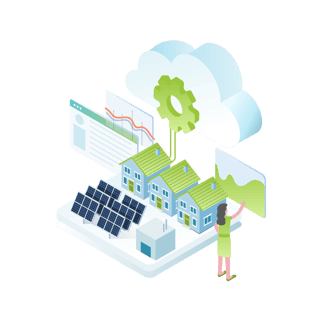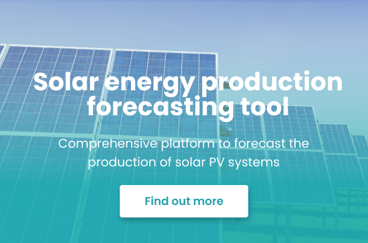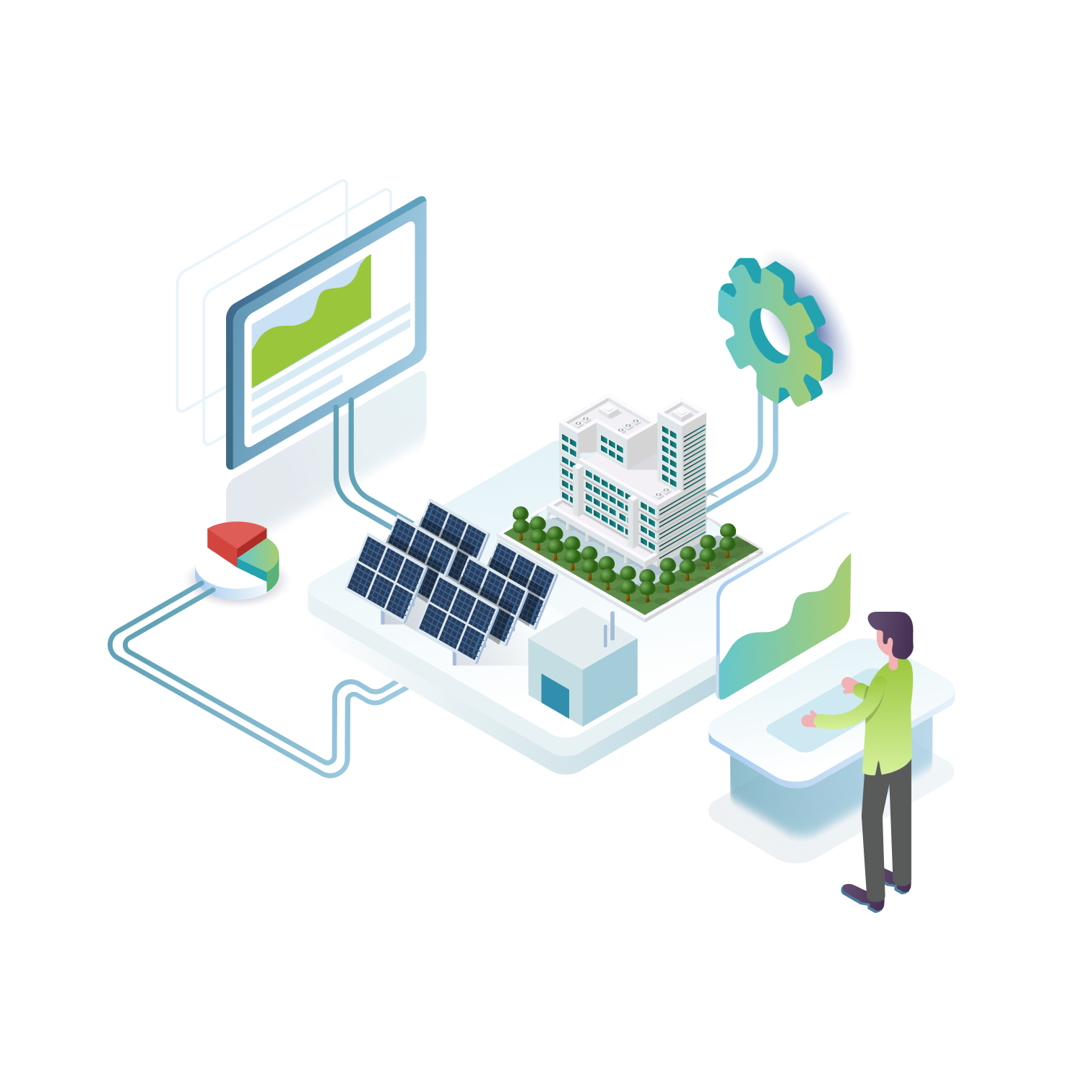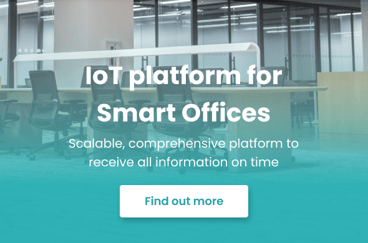Energy management software for properties and buildings

- SMART BUILDING
- ENERGY MANAGEMENT
- PROPERTIES
Buildings encounter multiple challenges in today's fast-paced world, necessitating cost-effective and creative solutions. With expanding urbanization, increasing energy demand and environmental concerns, buildings must evolve to meet changing requirements while minimizing their resource consumption and environmental impact. Whether they are offices, logistic zones or residential complexes, facilities confront various urgent challenges that demand proactive approaches to ensure sustainability, resilience, and efficiency.
One of the primary challenges lies in the escalating demand for energy and resources presents challenges in terms of energy consumption, water management, and waste generation. Buildings must optimize energy efficiency, employ innovative technologies for monitoring and controlling energy usage, and embrace innovative water conservation and waste management solutions.
Moreover, buildings contribute significantly to carbon emissions, both during construction and operation. Achieving carbon neutrality and mitigating climate impact requires designing and retrofitting buildings to be energy-efficient, incorporating renewable energy sources, and utilizing sustainable materials.
Energy software offers numerous benefits for building management, revolutionizing the way we optimize energy consumption and promote sustainability:
|
|
|
|
Energy software empowers buildings to achieve energy efficiency, cost savings, environmental sustainability, and improved overall performance.
|
|
Types of energy software solutions:
|
|
Energy Management Systems (EMS)
Energy Management Systems (EMS) software offers a vast collection of robust features for real-time monitoring and control of energy consumption. By collecting data from sensors, EMS provides valuable insights into energy usage patterns, identifies areas of inefficiency, and proposes optimization strategies. EMS software empowers facility managers to make data-based decisions and optimize energy consumption for significant cost savings and improved sustainability.
Energy Analytics Software
Energy analytics software leverages refined data analytics techniques to analyze energy consumption data and discover potential energy-saving opportunities. By examining energy usage practices, the software generates comprehensive energy performance reports that enable facility managers to evaluate their building's energy efficiency. Utilizing energy analytics software allows facility managers to make informed decisions backed by data, leading to optimized energy consumption and improved overall performance.
Renewable Energy Integration Software
Integrating renewable energy software becomes instrumental in optimizing their utilization of facilities with renewable energy sources such as solar panels or wind turbines. This specialized software forecasts renewable energy generation, continuously monitors its performance and strategically manages energy usage to maximize the utilization of renewable energy. Particularly during an energy crisis, this software aims to minimize reliance on the grid by prioritizing and optimizing the usage of renewable energy sources. By effectively managing and optimizing renewable energy resources, facilities can reduce their carbon footprint, enhance energy independence, and contribute to a more sustainable and resilient energy system.

Energy Monitoring Software
Energy monitoring software offers real-time data visualization and alerts for energy consumption, empowering facility managers to identify areas with high energy usage, detect anomalies, and take prompt corrective actions. This software lets facility managers gain valuable insights into energy usage patterns through visual representation. By envisioning these practices, facility managers can make data-based decisions to reduce energy waste and optimize energy usage, especially during energy crises. With the ability to monitor and visualize energy consumption in real-time, facility managers can implement targeted strategies to improve energy efficiency, mitigate the impact of the crisis, and ensure optimal utilization of energy resources
Share this post on social media:
Posts by Tag
- IoT (17)
- Smart cities (16)
- E-mobility (14)
- Energy Management (10)
- Mobility (9)
- Software development (9)
- Marketing automation (6)
- RPA (6)
- Robotic Process Automation (6)
- electric vehicles (6)
- Internet of Things (5)
- IoT solution (5)
- Marketing software (5)
- Smart Building (5)
- Business Intelligence (4)
- Custom applications (4)
- IoT platform (4)
- Uipath (4)
- electric charging (4)
- IoT devices (3)
- Properties (3)
- AI (2)
- BI (2)
- Montu (2)
- Multi-device functionality (2)
- Omnichannel (2)
- RPA Budapest (2)
- Smart city (2)
- UX design (2)
- app development (2)
- artificial intelligence (2)
- crm (2)
- crm software (2)
- electric charging station (2)
- machine learning (2)
- marketing campaign (2)
- optima (2)
- API Testing (1)
- Agriculture (1)
- Automated Testing (1)
- BYOD (1)
- EV (1)
- Energy Communities (1)
- Event insights (1)
- Event report (1)
- Green IoT (1)
- HR (1)
- IT Outsourcing (1)
- ML (1)
- Power BI (1)
- Resource Management (1)
- Smart Home (1)
- Smart Office (1)
- TaaS (1)
- UX/UI Design (1)
- Xamarin (1)
- cloud (1)
- cloud computing (1)
- cross-selling (1)
- data driven marketing (1)
- digital twin (1)
- dynamic customer segmentation (1)
- esg (1)
- inbound marketing (1)
- industry 4.0 (1)
- onprem (1)
- onpremise (1)
- scalability (1)
- software robot (1)
- testing as a service (1)
- upselling (1)
Recent Posts
Read On

- SMART BUILDING
- ENERGY MANAGEMENT
- PROPERTIES
Green building tech trends that are shaping the construction industry
The construction industry plays a significant role in environmental degradation, meaning that sustainability and green solutions are fundamental in improving our lives' environmental, economic, and societal aspects. Green buildings present an alternative method to reduce the environmental impact of...

- E-MOBILITY
- MONTU
- ELECTRIC VEHICLES
- ELECTRIC CHARGING STATION
- ELECTRIC CHARGING
Empower your fleet's efficiency with EV charging solutions
As businesses increasingly embrace sustainable practices, electric vehicles (EVs) have emerged as a game-changer for fleet management. With their environmental benefits and increasing availability, EVs are becoming attractive for businesses seeking to optimize their operations while reducing their...

- IOT
- E-MOBILITY
- ENERGY MANAGEMENT
- SMART CITIES
4 ways software solutions can help companies' decarbonization strategies
Decarbonization, the process of reducing or eliminating harmful emissions, has emerged as a central focus in our collective efforts to combat climate change and pave the way for a more sustainable and environmentally friendly future. Software solutions play a crucial role in supporting companies'...




